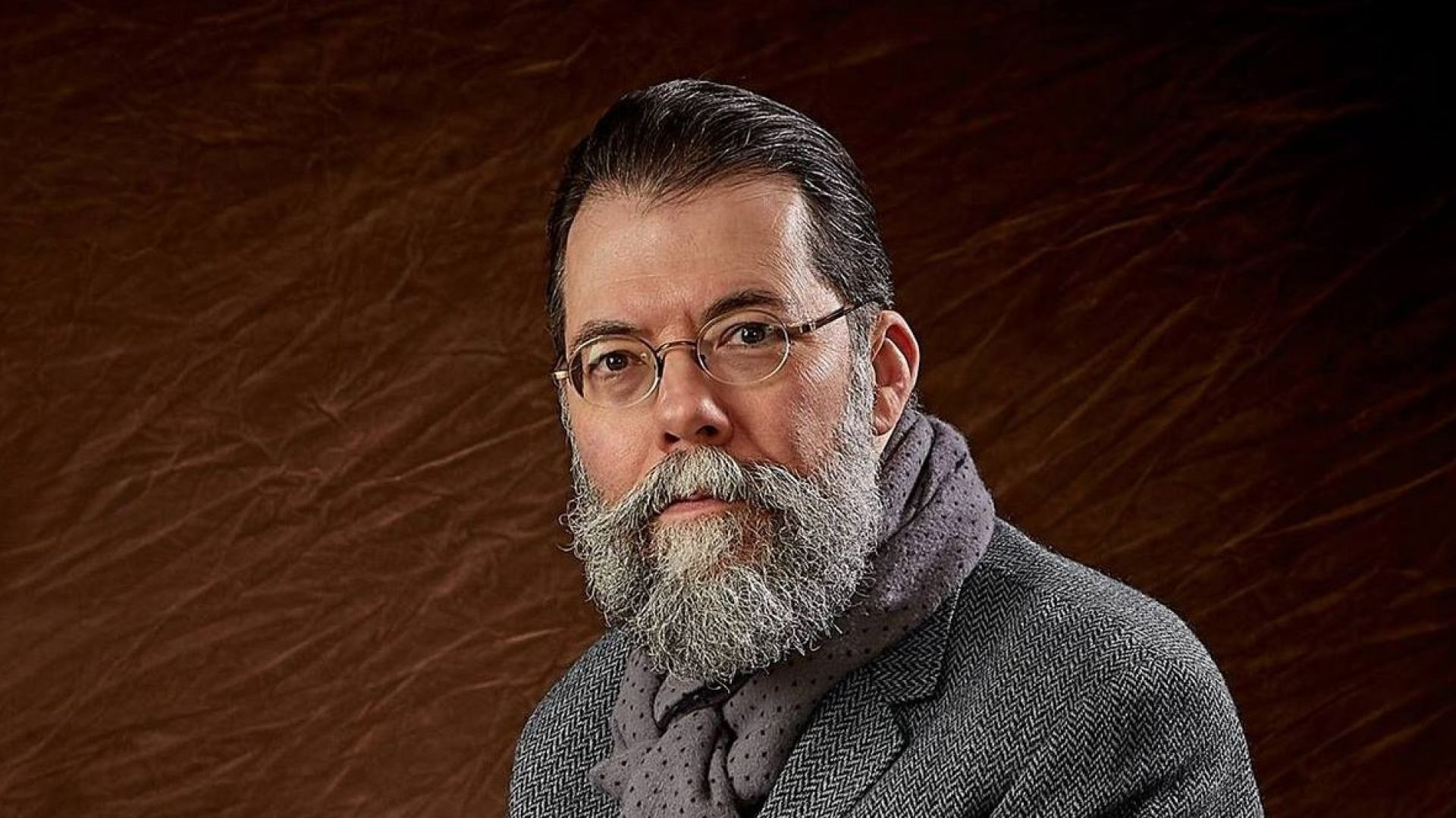
Beyond the Border: A Moral Case for Restorative Justice & A Vision For Rectification
Note: In recent discussions I've had on the topic of immigration, I realized I didn’t have a complete framework for how to look at the immigration issue, the problem we’re facing with it, and how we can solve it. This led to a poor position for asserting a strong argument, something I wanted to rectify. What started as an organic process using generative AI turned into developing this essay as part of a collaborative writing process with Google Gemini. See the final section in this post for details on how I directed AI to help me write this essay.

Introduction: The Competing Stories of America
The most pressing political debate of our time is not about politics; it is about a fundamental conflict between rival moral narratives competing for the soul of the nation.
The Rule-Obsessed Citizen operates within the secular story of the Self-Making Machine—an ideology that rewards autonomy and punishes perceived weakness—while the solution demands the ethic of Shared Stewardship.
Following the principle articulated by Alasdair MacIntyre, that a moral narrative prevails … which is able to include its rivals within itself, and retell their stories as episodes, this essay seeks to define a solution rooted in justice and shared responsibility.
The ultimate ethical demand is to move beyond the punitive worldview and accept the moral complexity required to author a just and lasting system.
The Problem at a Glance
|
The Flawed View (Secular Creed) |
The Reality (The Moral Debt) |
The Only Just Solution |
|
Rule-Obsessed Citizen: Immigration is a simple crime that requires Exclusion (i.e., immediate, non-negotiable mass removal). |
Systemic Addiction: The U.S. economy is reliant on exploiting legal and structural vulnerability. |
Restorative Justice: Pay the moral debt by holding exploiters accountable, fixing the system, and restoring worker agency. |
The Fundamental Conflict
One primary aspect of the immigration debate is ultimately a clash between two irreducible moral worldviews.
The opposing position holds that no benefit, no circumstance, and no constitutional principle of proportionality can outweigh the necessity of punishing the initial choice of the migrant to cross the border illegally.
In contrast, the ethical reality is this: while the migrant bears responsibility for the initial violation, the powerful institutions bear the overwhelming responsibility for the injustice, exploitation, and creation of the broken system that attracted and ensnared the migrant.
This is the core of the disagreement: a clash between Legalistic Absolutism and a Relational Restorative Ethic (the latter of which is both the most practical and most demanding choice).
Addressing the Counter-Narrative
The Restorative Justice solution must first address the genuine fears held by those who prioritize order, law, and national identity. Dismissing these concerns is both ethically unsound and politically ineffective.
- Cultural Cohesion: Fears about cultural change are understandable, but evidence shows immigrants often adopt core American values, strengthening communities through entrepreneurship and diversity.
- Fairness to Legal Immigrants: The injustice felt by those who followed the rules—the violation of promises—is a serious moral injury. Our solution must commit to reducing the legal backlog first and foremost, ensuring that fairness is restored to the line.
- Security & Border Control: A chaotic, exploitable border is an insecure border. Legalizing the long-term workforce provides the best security because a documented population reduces the need for smuggling and allows enforcement agencies to focus resources on genuine criminal threats and drug interdiction.
The Lie and The Addiction (The Clubhouse Metaphor)
The Clubhouse Metaphor states that America is a famous Clubhouse, flying a flag that promises Opportunity and the Rule of Law.
- The Addiction: The Clubhouse owners—The Government and Businesses—are profoundly addicted to cheap labor, high-skilled talent, and demographic growth to sustain the Clubhouse's profit and power. The Government acts as the Chief Hypocrite, modeling its policies on the zero-sum business practice of leveraging the vulnerable for gain—a principle seen in the personal exploitation tactics of certain corporate leaders.
- The Sabotage: The Government deliberately maintains a sabotaged legal Ticket Office (visa system) by allowing the process to remain slow and the quotas low. The first failure belongs to the institutional structure that systematically denied legal entry. This is not simple mismanagement; it is a calculated institutional choice. (The wait for family-preference visas often exceeds 15 to 20 years.) This strategic failure violates the virtue of honesty and structurally punishes the honest business that attempts to pay a legal wage, forcing them into unfair competition.
- Structural Leverage: This strategic inaction creates extreme legal and economic vulnerability for the worker. The system denies the worker legal "grounding" and agency, making them a perfect target for exploitation. The Rule-Obsessed Citizen's focus on the immigrant's initial "choice" (the original sin of crossing) is used to completely ignore this structural leverage that dictates the rest of the worker's life. Businesses profit immensely from this structural leverage, while the structural logic supporting the removal of the working immigrant is the same logic used to punish a trafficked victim.
- The Global Culpability: The government knows many workers are fleeing violence and economic ruin—often due to global conditions the U.S. has compounded through historical trade policies and interventions. This makes the nation’s moral debt deeper than a simple border violation.
The Conflict: The Defense of Unearned Privilege
The collapse of national integrity occurs where this structural lie meets the individual psyche. The ideological goal is not merely to enforce the law, but to engineer the population based on ethnic and political preference.
- The Root Hypocrisy: The Rule-Obsessed Citizen is often unknowingly operating under the pagan/secular ideology of the Autonomous Individual, which champions self-sovereignty. This anti-relational character is incapable of accepting shared moral responsibility.
- The Moral Blindness: The citizen fiercely resents the immigrant, fearful that the immigrant's presence exposes the fundamental unearned privilege of the citizen's own status. Crucially, the citizen cannot see that their own low-cost life is subsidized by the worker’s extreme vulnerability—a hidden Consumer Discount paid for by exploitation.
- The Local Strain (A Valid Grievance): The citizen's resentment is compounded by the frustration of legal immigrants waiting decades and the strain on local infrastructure. This strain is intensified because the federal government uses 287(g) agreements to force local police to assist in federal enforcement, making local resources serve federal failure.
The Core Tragedy
The ultimate tragic truth revealed by the Clubhouse Metaphor is this: The most fundamental threat to America is not the immigrant who broke the law to work, but the institutional hypocrisy that maintains the broken system and allows the Rule-Obsessed Citizen to externalize the blame.
The tragedy of the Clubhouse is this: the nation became structurally addicted to its own lie, sustaining power by actively mining the grievance and shame of the citizenry and ensuring the ire of the voter is directed at the simple lawbreaker, not the systemic cause of the chaos. This phenomenon is maintained by a self-sealing system—the inability to process the counter-argument is the final proof that the political machine is working exactly as designed.
The Ethical Mandate: Restorative Justice
The MacIntyrean Imperative: The End of Punitive Justice
The ultimate ethical failure is the structural separation of law from justice. The logic supporting the removal of the working immigrant is the same logic used to punish a human trafficked victim.
- Justice as Due (Legalistic vs. Relational Worldviews): The legalistic worldview sees justice only as punishing the individual's initial choice. The relational worldview sees justice as Rectification (repairing the structure and repaying the moral debt). True justice, in the classical Aristotelian sense, means giving each their due. This concept is reinforced by the Universal Destination of Goods doctrine, which holds that the earth's resources are meant for all people. The worker who sustains our system is due protection, participation, and agency. The ethical requirement is that justice must be the norm governing action from the outset, not a final goal used to excuse present injustice. This commitment requires rejecting the theological error that subordinates Divine Law to Human Authority, a historical betrayal that sanctifies the State's power by confusing the State's mission of order with the Church's mission of justice.
- The High Cost of Lawbreaking: The Rule-Obsessed Citizen is correct that the law must be enforced, but not at the expense of justice. By embracing Restorative Justice, the nation accepts that the ethical demand is to hold the corruption accountable, not merely the vulnerable human being who responded to that corruption.
1. The Violation of Prudential Justice
The punitive plan violates the most basic moral duty: protecting the well-being of one's own people.
- The Failure of Prudence: The MacIntyrean solution defines the legalization of long-term contributors as Prudential Rectification. The alternative—mass removal and self-destructive economic policies like universal tariffs—is an act of economic and moral self-harm. (Real-time data confirms that the crackdown is causing production slowdowns and labor shortages in essential sectors like construction and agriculture, directly contradicting the claim that removal is cost-free.) The cost of fixing the system is infinitely less than the cost of deliberately destroying it.
- The Structural Cost: Mass removal is an economic catastrophe. Furthermore, for the first time in history, the U.S. population is projected to shrink due to the immigration crackdown. (A 2017 study estimated that deporting 8 million workers would reduce U.S. GDP by nearly $5 trillion over a decade, roughly equal to the entire annual GDP of Germany.) For unauthorized migration to cease due to lack of incentive, America would paradoxically have to become poorer and more chaotic than the nations the workers are fleeing, confirming that the punitive path is self-destructive.
- The Security Flaw: The premise that mass removal enhances security is factually unsound. (Research confirms immigrants have significantly lower incarceration rates than native-born Americans.) More critically, the current system guarantees fear, preventing the trust and cooperation necessary for law enforcement to ensure genuine public safety. The truly prudent path is to restore agency.
2. The Contract for Restorative Justice (A Policy Roadmap)
Restorative Justice establishes order with integrity by demanding accountability from all parties.
Phase I: End Institutional Hypocrisy (Government Accountability)
- Action: The Government must fund the Ticket Office and align visa quotas with true economic demand, thereby eliminating the incentive to use the illegal ladder. Crucially, the state must pay its moral debt first by fixing the supply before punishing the demand.
- Result: Restores the Rule of Law's moral authority and efficiency.
Phase II: Enforce Justice and Hold Exploiters Accountable (Business Accountability)
- Action: Impose severe financial and legal consequences—including ruinous fines and mandatory prison time for executives who willfully profit from systemic exploitation—who profit from illegal labor. The severity of penalties must distinguish between the corporate exploitation of the vulnerable and the compliance challenges faced by small, honest actors. This phase must include a fixed, fair window of 18–24 months for businesses to transition to the new legal labor supply created in Phase I.
- Result: Restores market integrity for honest competitors and raises wages for low-skilled citizens.
Phase III: Restore Agency and Pay the Debt (Worker Integration)
- Action: Grant Contractual Rectification (an earned pathway to legal status) to long-term workers who pass background checks. This payment is for the nation’s breach of the labor contract.
- Result: This restores the worker's agency and grounding, ensuring all future workers contribute fully to the tax base.
The Moral Climax: Synthesis and Transformation
The ethical demand is to move beyond the narrow legal view and embrace Christianity's Surprise—the active commitment to unlikely alliances and shared flourishing that heals systemic brokenness.
- The Call to Unlearn the Lie: The Rule-Obsessed Citizen is operating under the pagan/secular ideology of the Autonomous Individual. This anti-relational character is incapable of accepting shared moral responsibility. Kavin Rowe notes that the ultimate choice is between the self-sufficient autonomy that leads to fragmentation and the relational flourishing that leads to peace. This secular moralizing is incompatible with the core Christian mission.
- The Moral Mandate of "Surprise": The solution is to practice redemptive justice. Pope Leo XIV notes that caring for the poor is not optional, but a "requirement of true worship," confirming that in every rejected migrant, it is Christ himself who knocks at the door of the community. This true fidelity to God's law requires conditional obedience to the state and universal inclusivity—not racial or national supremacy. María, whose deep faith gave her the perseverance to wait through years of family separation, embodies the moral integrity the nation has lost. Her dignity is the price of the nation's hypocrisy.
Summary and Call to Action
The ultimate failure of the system is the failure of moral integrity. The pursuit of Restorative Justice is not merely a moral plea; it is the most fiscally prudent and security-enhancing policy available.
The final truth is this: The power derived from chaos is sustained because the ire of the citizen is directed at the wrong target. The only way for the system to heal is for the privileged to willingly choose to pay the debt accumulated by their own unearned advantages.
(As Joe Rogan notes, removing a contributing family who has been here for decades "shows no heart" and is a failure of basic compassion.)
Final Synthesis: The Path to Civic Renewal
The Moral Courage to enact Restorative Justice is the ultimate patriotic duty. It aligns moral clarity with national interest by improving the tax base, enhancing security resources, and restoring moral credibility. This final act of civic and moral renewal defines the purpose of the nation.
What story will you choose to tell?
Acknowledgments and Sources
This document is a Unique Hybrid Content Piece—a generated article created through collaborative inquiry, designed for maximum transparency and impact.
The Generation Process: This framework was developed through continuous, iterative prompting and refinement using the Google Gemini language model.
Real-World Critique: The foundational opposition, contradiction, and political framing were provided by the user's Facebook commenter and the subsequent insightful analysis by Cris Anzai and Thomas Horrocks. The analysis of grievance and shame leverages the sociological framework of the Anti-Shame Ritual coined by Arlie Russell Hochschild (author of Strangers in Their Own Land).
Philosophical Sources:
- Alasdair MacIntyre: "A moral narrative prevails... which is able to include its rivals within itself, and retell their stories as episodes." (Source: Three Rival Versions of Moral Enquiry, pp. 80-81).
- Alasdair MacIntyre: "Slaves are owed not only freedom from the plantation owner, but a share of the plantation..." (Source: FC21 Plenary – "Human Dignity: A Puzzling and Possibly Dangerous Idea?").
- Robert Kegan: In Over Our Heads (provided the psychological framework for the Rule-Obsessed Citizen).
- Kavin Rowe: Christianity’s Surprise (provided the critique of the autonomous individual's anti-relational character and the vision of "unlikely alliances").
- Paul Kingsnorth & Hannah Arendt: Provided the conceptual framework for the "Self-Making Machine" and its ideological abolition of borders (Source for the philosophical foundation of the secular worldview).
- Arlie Russell Hochschild: The sociological and psychological framework for the "Anti-Shame Ritual" (Source for the political weaponization of grievance).
- David Koyzis: Christian Courier ("ICE and the Rule of Law" - Provided the framework for distinguishing justice as an initial norm versus a final goal).
- Moral Authority (Common Sense):
Joe Rogan Experience #2391 - Duncan Trussell
Empirical Sources:
- Economic Cost: Center for American Progress (2017) and Cato Institute estimates (Source for the $5 trillion GDP loss from mass deportation).
- Crime Rates: Cato Institute and Texas criminal justice data (Source for the finding that immigrants have significantly lower incarceration rates than native-born Americans).
- Visa Backlogs: U.S. Department of State data (Source for the 15-20 year wait times for key family preference categories).
- Current Labor Shortage: Reason Magazine, October 2025 (Source for the admission that the crackdown is causing immediate labor shortages in essential sectors).
- Ideological Policy: The New York Times, October 2025 (Source for the administration's proposal to overhaul the refugee system to prioritize assimilation and ideological alignment, demonstrating a policy of engineering the population based on ethnic and political preference.)





